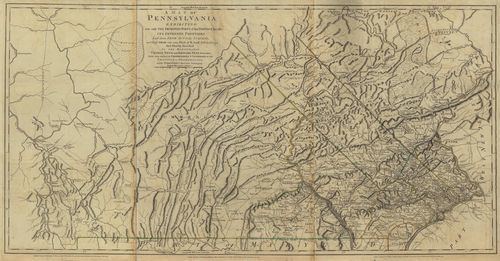Unknown Unknown | 1 killed 2 killed | |
 | ||
Results Negotiated, Legal Settlement, Land titles preserved and transferred to Pennsylvania as part of larger settlement | ||
The Pennamite–Yankee Wars or Yankee–Pennamite Wars were a series of conflicts consisting of the First Pennamite War (1769-1770), the Second Pennamite War (1774), and the Third Pennamite War (1784), in which the Wyoming Valley along the North Branch of the Susquehanna River was disputed between settlers from Connecticut (Yankees) and Pennsylvania (Pennamites).
Contents
Grants to Connecticut and Penn
Claims on the Wyoming Valley were disputed from the start. The Dutch regarded the Susquehanna River as the border between New Netherland and the English colony of Virginia. King Charles II of England rejected all Dutch claims on North America and he granted the land to Connecticut in 1662, two years before his country's conquest of New Netherland and its subsequent conversion into the Province of New York. In 1681, Charles II also included the same land in the grant to William Penn.
The charter of each colony assigned the territory to the colony so that overlapping land claims existed. In the 17th century, fierce resistance by the Susquehannock rendered the debate academic, but by the mid-18th century, the double grant became problematic. Thomas Paine mentioned the conflict in his pro-independence pamphlet Common Sense as evidence that "Continental matters" could be sensibly regulated only by a Continental government.
Both colonies purchased the same land by treaties with the Indians. Connecticut sent settlers to the area in 1754. Yankee settlers from Connecticut founded the town of Wilkes-Barre in 1769. Armed bands of Pennsylvanian Pennamites tried to expel them without success from 1769–70, starting the First Pennamite War. This was followed by the Second Pennamite War in 1775, and by the Third Pennamite War in 1784. The "wars" were not particularly bloody. In the First Pennamite war, two men from Connecticut and one man from Pennsylvania were killed in the course of two years.
Connecticut's claim was confirmed by King George III in 1771. In 1773, more settlers from Connecticut erected a new town which they named Westmoreland. The Pennsylvanians refused to leave, and the militia of Northumberland County, Pennsylvania made an abortive attack on a Connecticut settlement in December 1775.
Resolution
Conflicts continued between the two claimants at the end of the American Revolution, and the Continental Congress overturned the king's ruling in 1782 and upheld Pennsylvania's claim to the area. As such, it remains the only interstate dispute settled by Congress under the Articles of Confederation. But the state of Pennsylvania sought to force the Yankees from the land in 1784, which began the Third Pennamite War, with Connecticut and Vermont sending men to help the settlers. Umbrage remained until the Pennsylvania Legislature confirmed the various land titles in 1788. The controversy ended in 1799, with the Wyoming Valley becoming part of Pennsylvania and the Yankee settlers becoming Pennsylvanians with legal claims to their land.
